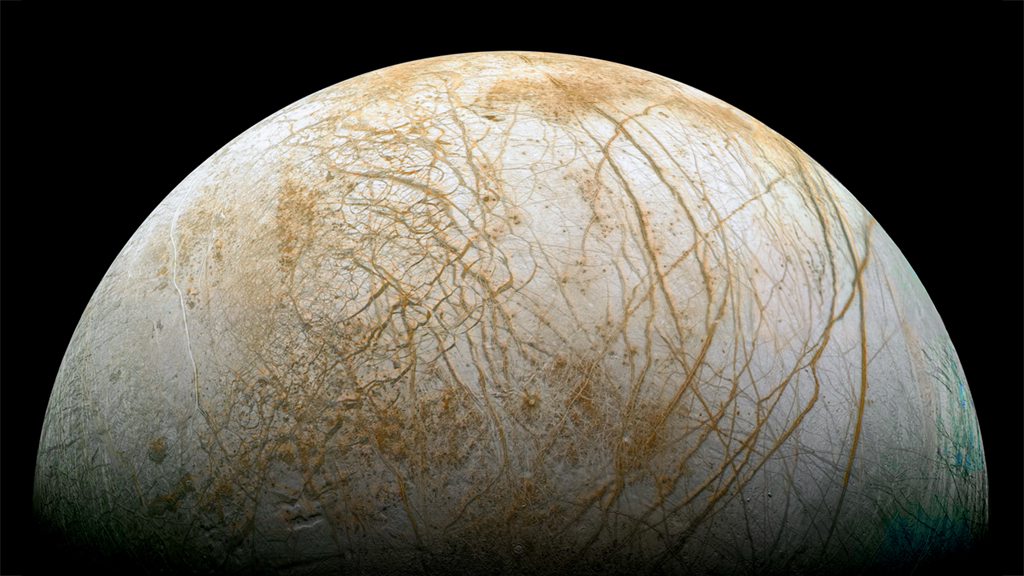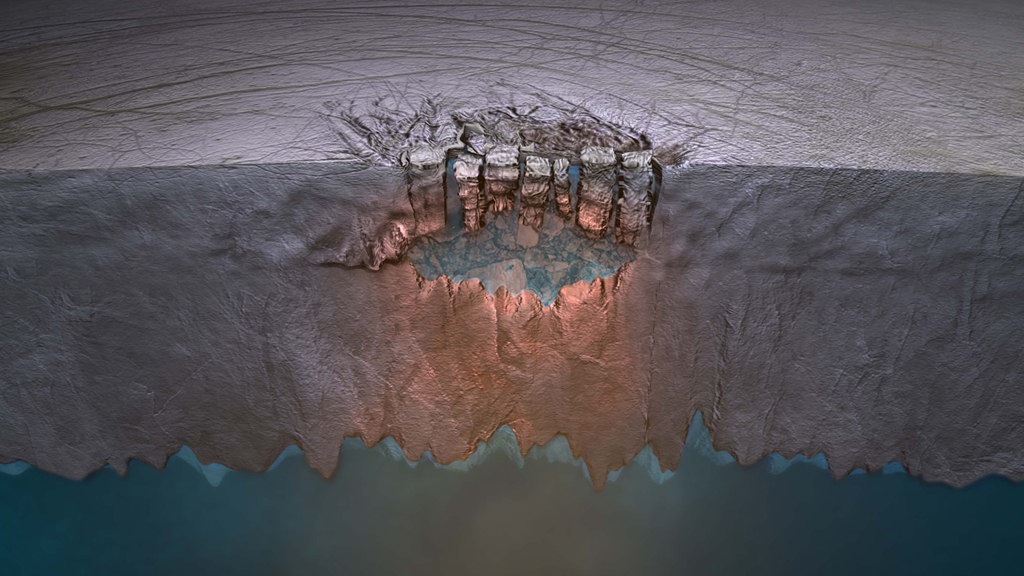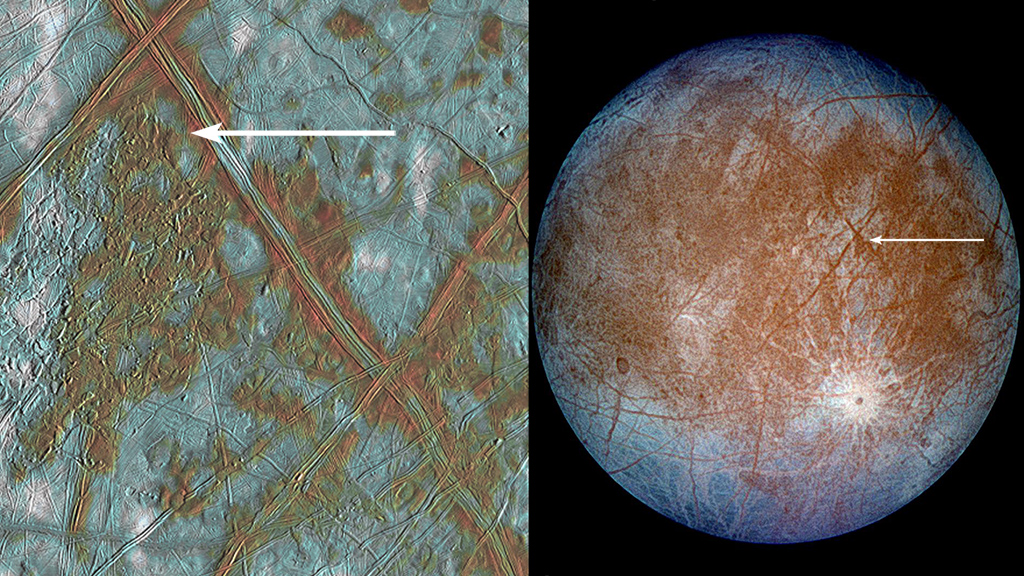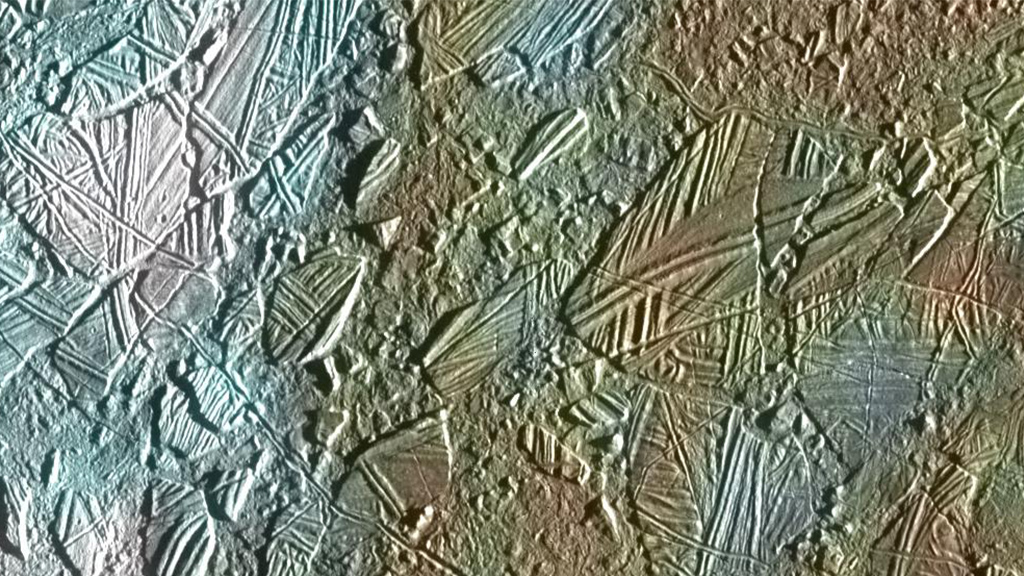Planets and Moons
ID: 11176

Hard layers of ice make up the surface of Jupiter's frozen moon Europa. Glacial cracks and ridges scar its frigid white plains, carving paths across an icy shell that conceals a deep ocean of liquid water. Closer inspection of the moon's fractured topography reveals highly disrupted areas, called chaos terrains, where blocks of ice appear to have broken off, drifted and refrozen to the surface. Searching for an explanation of how these features formed, researchers studying images of Europa taken by NASA's Galileo spacecraft have come up with an answer. As plumes of warm ocean water rise to the subsurface, massive lakes develop inside the moon's crust—some larger than North America's Great Lakes combined. Over time, the ice directly above these lakes collapses, splintering into floating geometric fragments that rotate, raft and resettle into all kinds of chaotic configurations. Watch the video to learn more about Europa's chaos terrains.



Europa's Chaos Terrains




For More Information
Story Credits
Please give credit for this item to:
Science@NASA and NASA's Goddard Space Flight Center
Cover image courtesy of NASA/JPL/Ted Stryk
Video courtesy of Science@NASA
Illustration courtesy of Britney Schmidt/Dead Pixel VFX/Univ. of Texas at Austin
Conamara Chaos image courtesy of NASA/JPL/University of Arizona and NASA/ NSSDC Photo Gallery
Conamara Chaos close-up courtesy of NASA/JPL/University of Arizona
Science@NASA and NASA's Goddard Space Flight Center
Cover image courtesy of NASA/JPL/Ted Stryk
Video courtesy of Science@NASA
Illustration courtesy of Britney Schmidt/Dead Pixel VFX/Univ. of Texas at Austin
Conamara Chaos image courtesy of NASA/JPL/University of Arizona and NASA/ NSSDC Photo Gallery
Conamara Chaos close-up courtesy of NASA/JPL/University of Arizona
Short URL to share this page:
https://svs.gsfc.nasa.gov/11176
Keywords:
SVS >> App
NASA Science >> Planets and Moons
https://svs.gsfc.nasa.gov/11176
Keywords:
SVS >> App
NASA Science >> Planets and Moons







